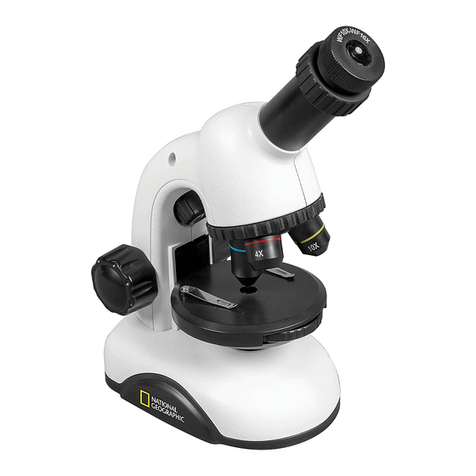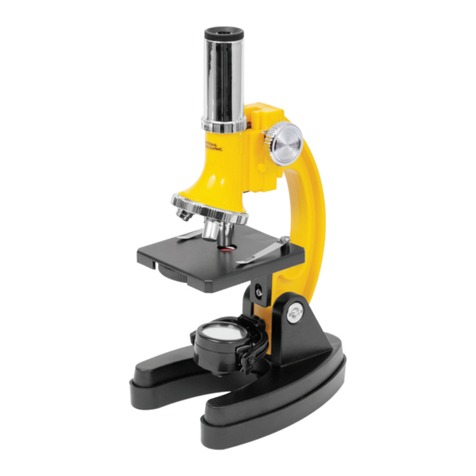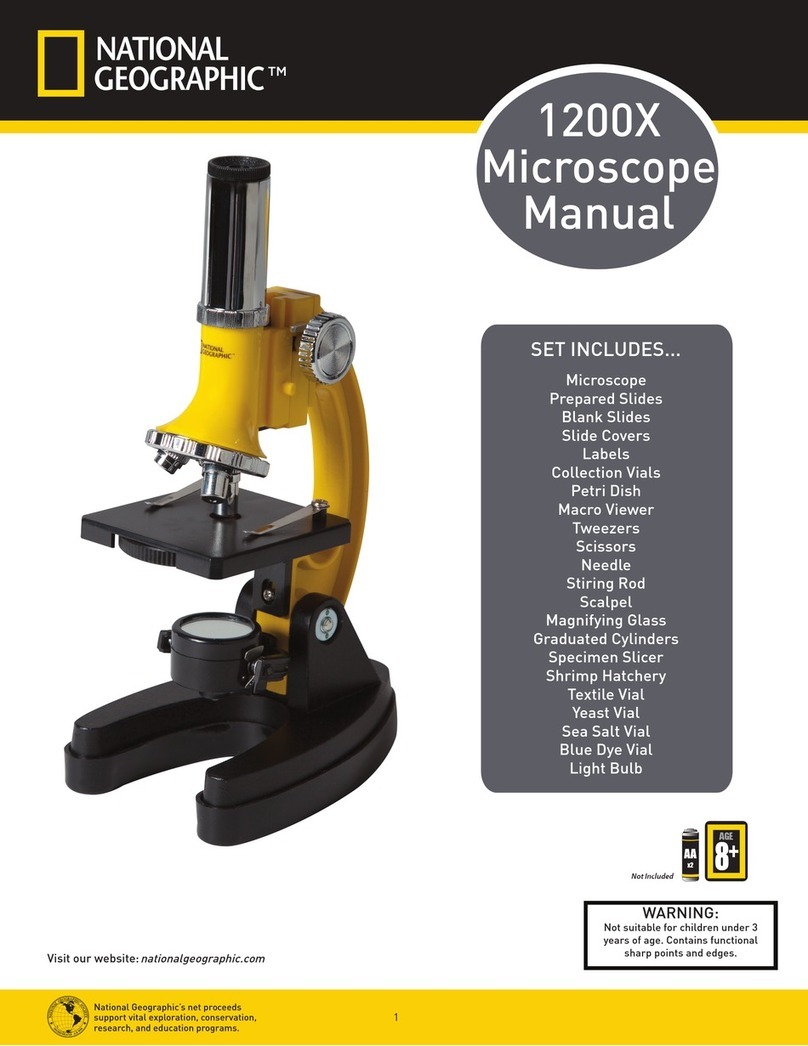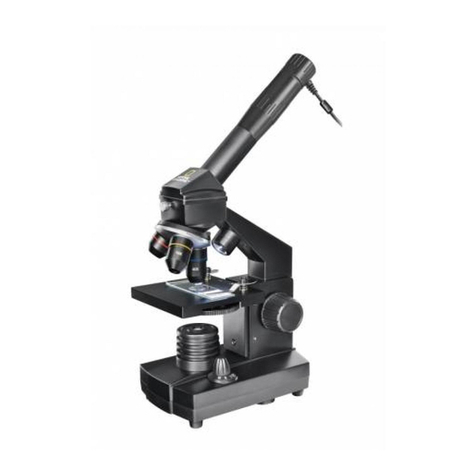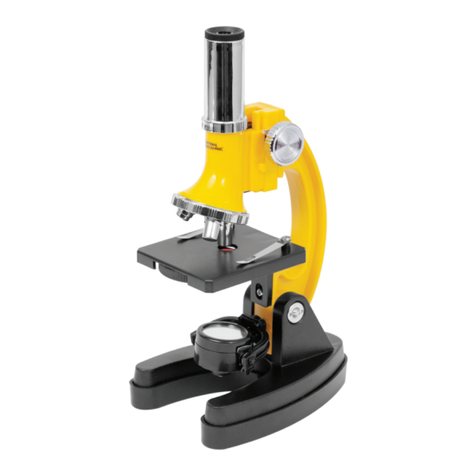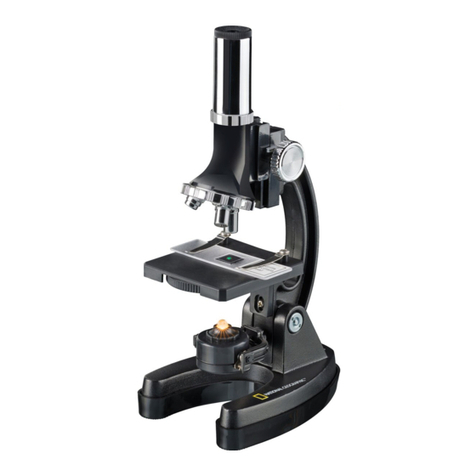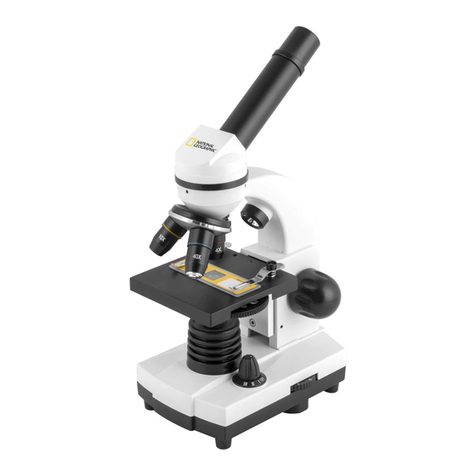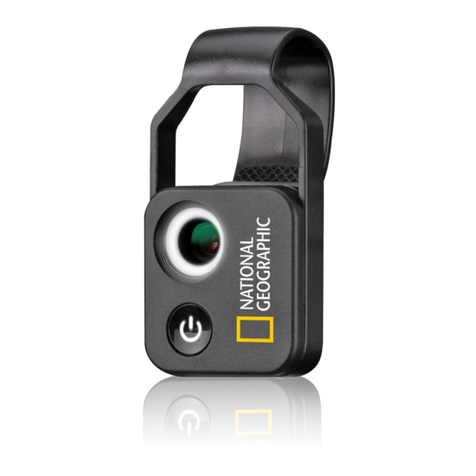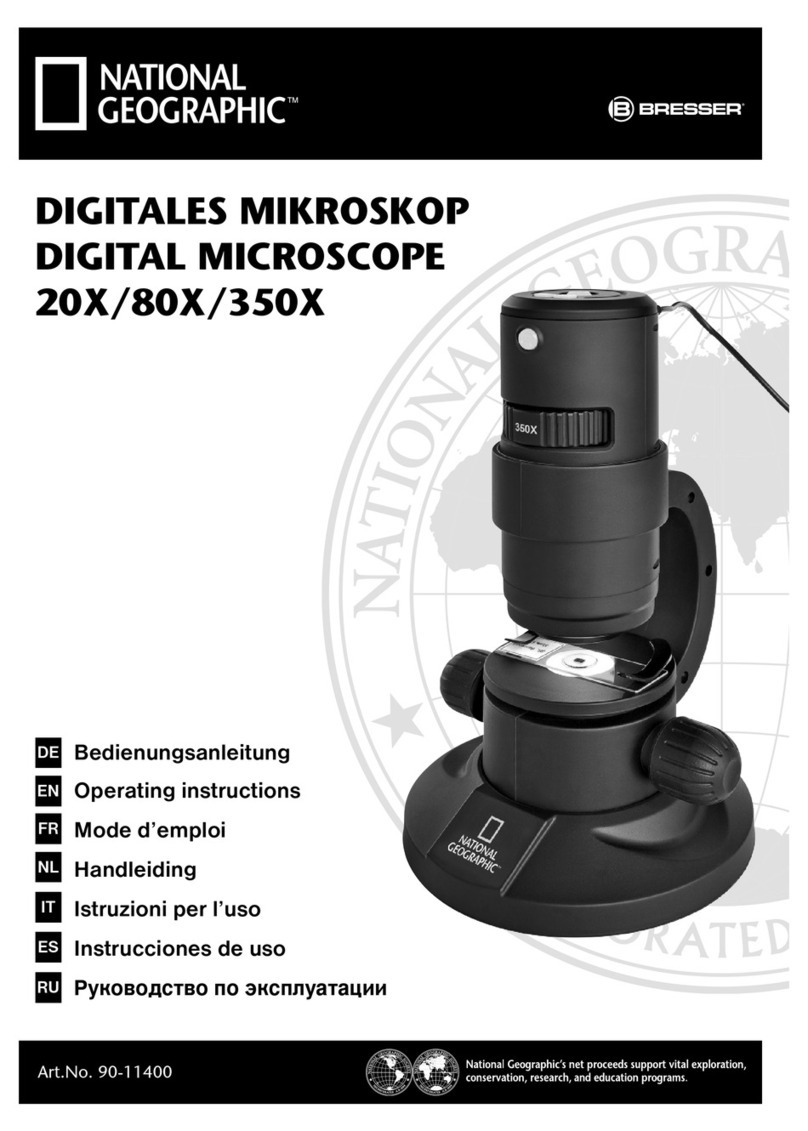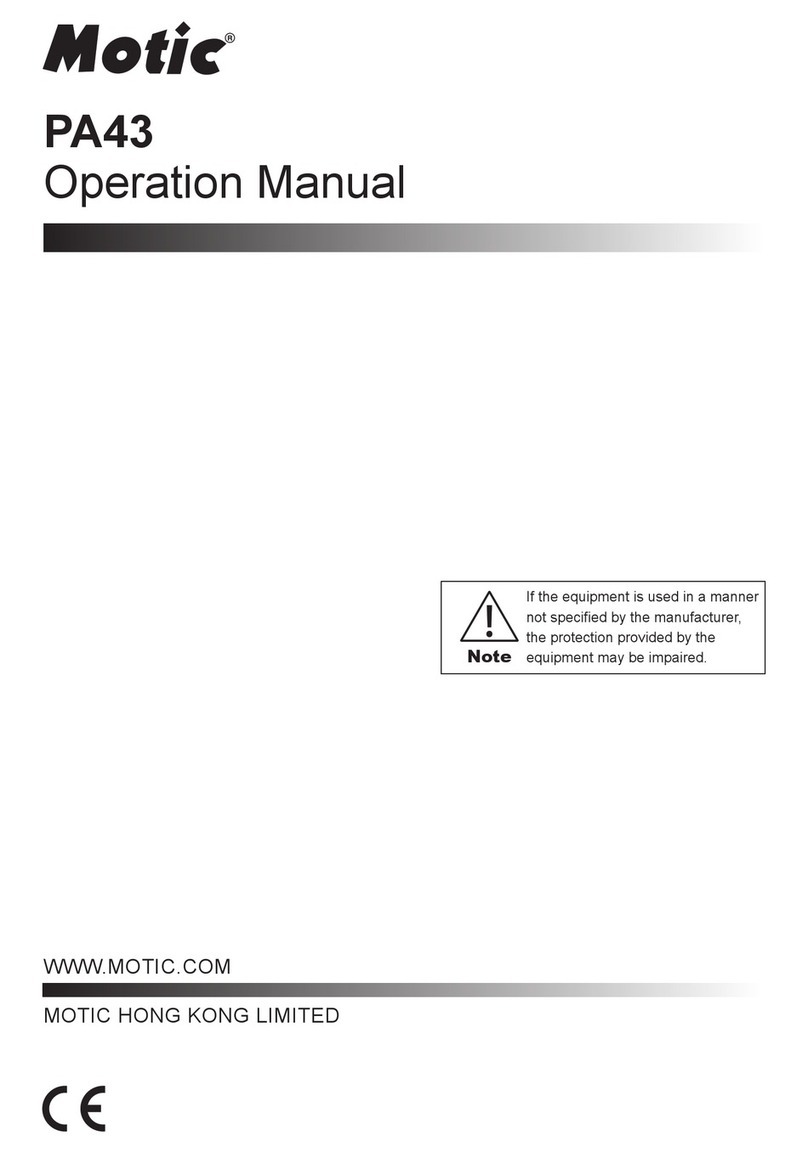
10
• THIS MICROSCOPE SET IS INTENDED FOR CHILDREN OLDER THAN AGE 9. CHILDREN SHOULD ONLY USE THIS DEVICE
UNDER ADULT SUPERVISION. NEVER LEAVE A CHILD UNSUPERVISED WITH THIS DEVICE. ACCESSORIES IN THE
EXPERIMENT KIT MAY HAVE SHARP EDGES AND TIPS. PLEASE STORE THE DEVICE AND ALL OF ITS ACCESSORIES AND
AIDS OUT OF THE REACH OF YOUNG CHILDREN WHEN NOT BEING USED DUE TO A RISK OF INJURY.
• CHEMICALS: ANY CHEMICALS AND LIQUIDS USED IN CONJUNCTION WITH THE DEVICE SHOULD BE KEPT OUT OF
REACH OF CHILDREN. DO NOT DRINK ANY OF THE CHEMICALS CONTAINED IN THIS SET. HANDS SHOULD BE WASHED
THOROUGHLY UNDER RUNNING WATER AFTER WORKING WITH THESE CHEMICALS. IN CASE OF ACCIDENTAL CONTACT
WITH EYES OR MOUTH, RINSE THE AFFECTED AREA WITH WATER. SEEK MEDICAL TREATMENT FOR AILMENTS ARISING
FROM CONTACT WITH THE CHEMICAL SUBSTANCE, AND TAKE THE CHEMICALS WITH YOU TO THE DOCTOR.
• CHOKING HAZARD: CHILDREN SHOULD ONLY USE DEVICE UNDER ADULT SUPERVISION. KEEP PACKAGING
MATERIALS LIKE PLASTIC BAGS AND RUBBER BANDS OUT OF THE REACH OF CHILDREN AS THESE
MATERIALS POSE A CHOKING HAZARD.
• BATTERY GUIDELINES: THIS DEVICE CONTAINS ELECTRONIC COMPONENTS THAT ARE POWERED BY BATTERIES.
BATTERIES SHOULD BE KEPT OUT OF CHILDREN’S REACH. WHEN INSERTING BATTERIES, PLEASE ENSURE THE
POLARITY IS CORRECT. INSERT THE BATTERIES ACCORDING TO THE DISPLAYED +/- INFORMATION. NEVER MIX OLD
AND NEW BATTERIES. REPLACE ALL BATTERIES AT THE SAME TIME. NEVER MIX ALKALINE, STANDARD CARBON-
ZINC AND RECHARGEABLE NICKEL-CADMIUM BATTERIES. NEVER SHORT CIRCUIT THE DEVICE OR BATTERIES OR
THROW EITHER INTO A FIRE. LEAKING OR DAMAGED BATTERIES CAN CAUSE INJURY IF THEY COME INTO CONTACT
WITH THE SKIN. IF YOU NEED TO HANDLE SUCH BATTERIES, PLEASE WEAR SUITABLE SAFETY GLOVES. REMOVE
BATTERIES FROM THE PRODUCT BEFORE EXTENDED STORAGE TO PREVENT LEAKING. DO NOT IMMERSE THE BATTERY
COMPARTMENT IN WATER. NON-RECHARGEABLE BATTERIES ARE NOT TO BE RECHARGED.
RECHARGEABLE BATTERIES ARE TO BE REMOVED FROM THE TOY BEFORE BEING CHARGED. RECHARGEABLE
BATTERIES ARE ONLY TO BE CHARGED UNDER ADULT SUPERVISION. EXHAUSTED BATTERIES ARE TO BE REMOVED
FROM TOY. THE SUPPLY TERMINALS ARE NOT TO BE SHORT-CIRCUITED. PLEASE RECYCLE BATTERIES RESPONSIBLY.
• RISK OF FIRE: DO NOT PLACE DEVICE, PARTICULARLY THE LENSES, IN DIRECT SUNLIGHT. THE CONCENTRATION OF
LIGHT RAYS COULD CAUSE A FIRE.
• DO NOT DISASSEMBLE THIS DEVICE. IN THE EVENT OF A DEFECT, PLEASE CONTACT YOUR DEALER. THE DEALER
WILL CONTACT THE CUSTOMER SERVICE DEPARTMENT AND CAN SEND THE DEVICE IN TO BE REPAIRED IF
NECESSARY.
• DO NOT SUBJECT THE DEVICE TO TEMPERATURES EXCEEDING 60 °C (140 °F).
• DISPOSAL: KEEP PACKAGING MATERIALS, LIKE PLASTIC BAGS AND RUBBER BANDS, AWAY FROM
CHILDREN AS THEY POSE A RISK OF SUFFOCATION. DISPOSE OF PACKAGING MATERIALS AS LEGALLY
REQUIRED. CONSULT THE LOCAL AUTHORITY ON THE MATTER IF NECESSARY AND RECYCLE MATERIALS
WHEN POSSIBLE.
• THE WEEE SYMBOL IF PRESENT INDICATES THAT THIS ITEM CONTAINS ELECTRICAL OR ELECTRONIC
COMPONENTS WHICH MUST BE COLLECTED AND DISPOSED OF SEPARATELY.
• NEVER DISPOSE OF ELECTRICAL OR ELECTRONIC WASTE IN GENERAL MUNICIPAL WASTE. COLLECT AND DISPOSE
OF SUCH WASTE SEPARATELY.
• MAKE USE OF THE RETURN AND COLLECTION SYSTEMS AVAILABLE TO YOU, OR YOUR LOCAL RECYCLING PROGRAM.
CONTACT YOUR LOCAL AUTHORITY OR PLACE OF PURCHASE TO FIND OUT WHAT SCHEMES ARE AVAILABLE.
• ELECTRICAL AND ELECTRONIC EQUIPMENT CONTAINS HAZARDOUS SUBSTANCE WHICH, WHEN DISPOSED OF
INCORRECTLY, MAY LEAK INTO THE GROUND. THIS CAN CONTRIBUTE TO SOIL AND WATER POLLUTION WHICH IS
HAZARDOUS TO HUMAN HEALTH, AND ENDANGER WILDLIFE.
• IT IS ESSENTIAL THAT CONSUMERS LOOK TO RE-USE OR RECYCLE ELECTRICAL OR ELECTRONIC WASTE TO AVOID IT
GOING TO LANDFILL SITES OR INCINERATION WITHOUT TREATMENT.
IMPORTANT SAFETY INSTRUCTIONS
READ AND FOLLOW THE INSTRUCTIONS BEFORE USE.
KEEP THESE INSTRUCTIONS FOR LATER USE.
Customer Service: Call 1-866-252-3811

